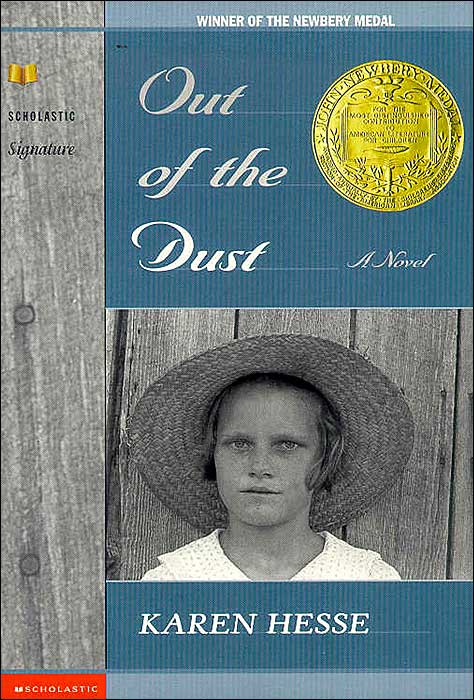by Meg Rosoff
Rosoff, M. (2004). How I Live Now. New York: Wendy Lamb Books. ISBN 0385746776
With the feeling of being tossed out of her home in New York, Daisy arrives in England to an idyllic setting with her cousins and aunt shortly before terrorists invade England and war breaks out. At first Daisy and her cousins feel untouched by the war, but this utopia doesn't last. Completely at home and at peace, Daisy becomes involved in a physical and emotional relationship with her cousin, Edmond. Soon after the relationship begins, Daisy, along with her cousin Piper, are separated from Edmond and the rest of the male cousins. Rejoining her family and taking care of Piper through the terrors of war become Daisy's focus. An ending that takes place six years in the future, shows the family together again, though not in exactly the way the reader may expect.
Critical Analysis
Meg Rosoff tells a gripping tale using a distinct first person voice and a unique style. When we first meet Daisy, she is self-absorbed and uses food to manipulate people in her world. As the story progresses, Daisy grows and matures in slow, but dramatic ways. Run-on sentences and a conversational, almost stream of consciousness tone provide insight into Daisy's way of thinking. Stylized punctuations and capitalization help show Daisy's emotions.
I can tell Meg Rosoff lives in England; her descriptions of the villages Daisy lives in or travels through are strikingly realistic, from the small village stores to the countryside and from the hustle of London to the slow pace of village life. Rosoff is able to write convincingly about a time and place in which traditional moral behaviors are displaced; she creates a realistic world in which war breaks out. Teens will almost certainly feel as if they have lived through this with Daisy.
When I first read this novel, I didn't like it. As I have studied it and reviewed it, I realized I do like it, enough that I will read other books by Meg Rosoff. What I don't like is the age recommendation. The front jacket cover recommends ages 12 and up and I disagree. I feel 15 and up is more appropriate.
Review Excerpts
* Kirkus Reviews, "This is a very relatable contemporary story, told in honest, raw first-person and filled with humor, love, pathos, and carnage."
* Kliatt Reviews,"Daisy is an unforgettable heroine--vulnerable and flawed, yes, but fiercely loving and tough as well."
* Horn Book, "This first novel is intelligent, funny, serious, and sweet; a winning combination of acerbic commentary, innocence, and sober vision."
Connections
* Here is an award winning, student created video related to How I Live Now by Expanded Books.
* Multnonah County Library has a book discussion guide for How I Live Now. It includes a summary, a booktalk guide, discussion questions, and read alikes. Find it here.
*Meg Rosoff has a website with a bibliography and a script writing contest for How I Live Now! The contest is open to ages 13-18. Check it out here.

















